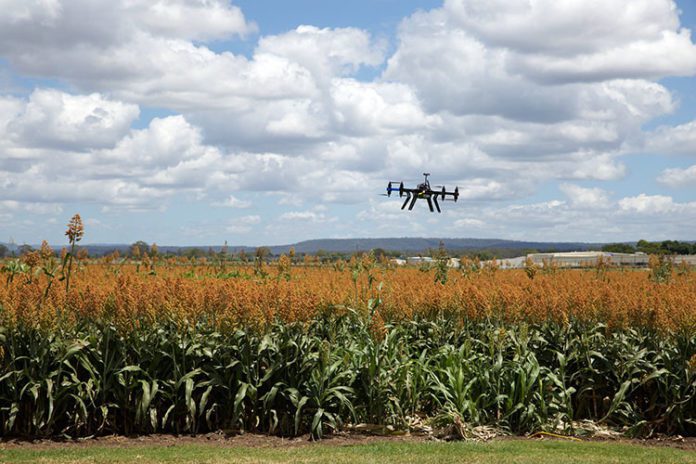

For many decades, Sierra Leone’s agriculture has been a symbol of the country’s poverty. In fact, though agriculture is one of the best ways to trigger social and economic development across the country, our authorities continue to play tricks with a key sector of our economy. So far, we continue to see millions of United States dollars projects, but nothing to concretely write home about.
Agriculture is part of a vast food system that touches almost every aspect of life in society. The Sustainable Development Goals recently ratified by the United Nations paint a picture of the future the world is committed to building. Agriculture plays a part in reaching almost every single one of the 17 goals.
A resilient Sierra Leone food system will fight poverty, disease, hunger, youth unemployment, and malnutrition by providing a better living to the unemployed, poorest, and sickest people in the country. It will employ the rapidly growing youth population by creating a new class of businesses. It will shore up our deplorable national economy and restore a reasonable balance of trade by allowing Sierra Leone to feed not just itself, but also countries on other continents.
How does such a system get built? It is not easy, since food systems tend to evolve over time, and money dedicated to this sector of our economy over the years isn’t wisely spent. But today’s Sierra Leone politicians have a powerful tool to deploy—digital technology—to make the process easier.
This list of five key principles conveys the main idea: Once you conceive of the goal of agriculture as more than simply producing enough calories to keep our population alive, our political stakeholders can harness its power to change our society.
First, the smallholder farmer is at the centre: More than 80 percent of the agricultural production in the country comes from smallholders. But these farmers are not nearly as productive as they should be, and they cannot sell their surpluses because the infrastructure to link them to markets and storage facilities is virtually non-existent.
Second, women are empowered: Women provide the majority of labour in Sierra Leone farms, but for a variety of reasons, they are less productive, on average, than men. Women in Sierra Leone invest as much as 10 times more of what they earn in priorities like education, nutrition, and health, so when they have money and the power to decide how to spend it, everybody benefits.
Third, when it comes to food, quality matters as much as quantity: We are only now beginning to understand the impact of malnutrition on poor countries including Sierra Leone. It’s an underlying cause of almost half of all the deaths of children under 5. It also leaves hundreds of Sierra Leone children cognitively or physically impaired for the rest of their lives.
Fourth, there is a thriving rural economy around the smallholder farmers: Farmers need financial services, seeds, and fertiliser before they begin planting; after the harvest, they need storage, transport, processing, and marketing. Every single step in this process should be a business opportunity for an entrepreneur.
Fifth, the environment is preserved for future generations: It is easy to boost yields with short-sighted investments and policies that deplete natural resources. Especially as the effects of climate change begin to be felt, it is critical that Sierra Leone encourage sustainable agriculture.
Digital technology can help Sierra Leone farmers achieve all these goals, by clearing away one of the biggest obstacles to progress: the isolation of the smallholder farmer. To take just one example, Ethiopia’s Agricultural Transformation Authority (ATA) launched an agricultural hotline last year where I happened to be invited by the East African Youth Leader; a very good friend of mine. The system has already logged more than 4 million calls and sends text messages to 500,000 users with up-to-date agronomic information, I am told. ATA is also creating EthioSIS, a digital soil map analysing the country’s soils down to a 10 x10 km resolution. Eventually, these two systems are merging, pushing cutting-edge, highly tailored information to millions of farmers in that country.
The digital infrastructure for interacting with smallholders is being put in place as I write. What happens in the next 10 years will determine what is possible through digital agriculture over the next 50 years. Getting it right means making sure that all farmers, especially the poorest and most remote, are included from the start.
It used to be that in most African countries including Sierra Leone, even if we had big ideas about how to support smallholder farmers, we didn’t know how to reach them. Now, we can do this with the spread of mobile companies in Sierra Leone.
So, it is time to change the way we think. Farmers are not the cause of Sierra Leone’s poverty; our political stakeholders are the cause, and farmers are a potential solution to our politically man-made poverty if the atmosphere is made conducive for them to thrive successfully. They are key to creating the future envisioned by the SDGs.
Eventually, the work of building a Sierra Leone food system will be for experts: seed and soil scientists, computer programmers, policymakers in government Ministries, and entrepreneurs with new business ideas. But right now, not enough people understand how much a new food system can do for the country. What we need most is a generation of Sierra Leone leaders committed to advocating for this vision of Sierra Leone transformed.


